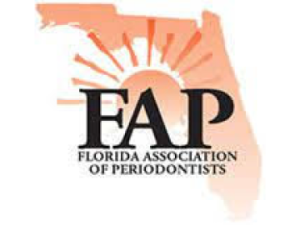Key Highlights
- Gum disease is a common condition that affects about half of adults in the US.
- Early detection and treatment of gum disease is crucial to prevent tooth and bone loss.
- Symptoms of gum disease may include redness, swelling, bleeding gums, and bad breath.
- Plaque buildup and bacteria are major contributors to the development of gum disease.
- Gum disease is linked to other health issues such as heart disease, diabetes, and immune system problems.
- Proper oral hygiene and regular dental check-ups are key to preventing and managing gum disease.
Introduction
Gum disease, also known as periodontal disease, is a common condition that affects the tissues surrounding and supporting the teeth. It is a major cause of tooth loss in adults and can have serious implications for dental health if left untreated. While gum disease may start as a painless condition, it can progress to more advanced stages, leading to symptoms such as redness, swelling, bleeding gums, and even tooth and bone loss. Despite its prevalence and potential consequences, gum disease is often overlooked or misunderstood, making it a significant threat to dental health.
In this blog, we will explore the early warning signs of gum disease, the causes behind its development, the connection between gum disease and overall health, the different types of gum disease, and the professional diagnosis and treatment options available. We will also discuss home care and prevention strategies, as well as when to seek professional help. By understanding the symptoms and causes of gum disease, you can take proactive steps to maintain healthy gums and prevent the progression of this common oral health condition.
The Early Warning Signs of Gum Disease
Recognizing the early warning signs of gum disease is crucial for early detection and prevention. While gum disease may not initially cause pain, there are several symptoms that you can watch for, such as redness, swelling, and bleeding of the gums. These are all signs of inflammation and irritation in the gum tissue, which can be caused by the buildup of bacteria and plaque. Paying attention to these warning signs, along with maintaining proper oral hygiene and regularly visiting your dentist, can help you catch gum disease in its early stages and prevent further damage to your oral health.
Recognizing the first symptoms: Redness, swelling, and bleeding
The first symptoms of gum disease may include redness, swelling, and bleeding gums. It’s important to pay attention to any changes in the appearance or condition of your gums, as these can be early signs of gum disease. Here are some key symptoms to watch for:
- Redness: If your gums appear redder than usual, it may be a sign of gum disease. Healthy gums should have a pinkish hue.
- Swelling: Swollen gums can be an indication of gum disease. If your gums feel puffy or appear larger than usual, it’s important to seek dental attention.
- Bleeding: Bleeding gums, especially during brushing or flossing, can be a warning sign of gum disease. Healthy gums should not bleed easily.
If you notice any of these symptoms, it’s important to consult your dentist for a proper diagnosis and treatment plan. Early detection and intervention can help prevent further progression of gum disease and protect your oral health.
Why early detection is crucial for prevention
Early detection of gum disease is crucial for prevention and maintaining good oral health. By identifying gum disease in its early stages, you can take immediate action to prevent further damage to your gums and teeth. Here’s why early detection is so important:
- Prevents tooth and bone loss: Gum disease that is left untreated can lead to tooth and bone loss. Early detection allows for prompt treatment and can help prevent the need for more invasive procedures or tooth extraction.
- Saves money: Treating gum disease in its early stages is generally less expensive than treating advanced stages of the disease. Regular dental check-ups can help identify gum disease before it becomes more severe, saving you money in the long run.
- Preserve oral health: Gum disease can have long-term effects on your oral health. By detecting and treating the disease early, you can minimize the impact on your gums, teeth, and overall oral health.
By practicing good oral hygiene, including regular brushing, flossing, and dental check-ups, you can increase your chances of early detection and prevention of gum disease. Your dentist can guide proper oral hygiene techniques and recommend any necessary treatment to maintain healthy gums.
Unpacking the Causes of Gum Disease
Understanding the causes of gum disease is essential for preventing its development. While poor oral hygiene is a major contributor, other factors can increase the risk of gum disease. Let’s unpack some of the common causes:
- Plaque buildup: Plaque is a sticky film that accumulates on the teeth and gumline. If not removed through regular brushing and flossing, the bacteria in plaque can cause inflammation and lead to gum disease.
- Bacterial infection: The bacteria in plaque can infect the gums and cause gum disease. Certain strains of bacteria are more harmful than others and can contribute to the development of periodontitis, a more severe form of gum disease.
- Lifestyle choices: Tobacco use, such as smoking or chewing tobacco, increases the risk of gum disease. Additionally, poor nutrition, stress, and certain medications can also contribute to the development of gum disease.
By addressing these causes and making positive lifestyle choices, such as quitting smoking and practicing good oral hygiene, you can reduce your risk of developing gum disease and maintain healthy gums.
The role of plaque and bacteria in gum disease development
Plaque buildup and bacterial infection play a significant role in the development of gum disease. Dental plaque, a sticky film that forms on the teeth and gumline and contains bacteria, is the main cause of gum disease. When plaque is not removed through regular brushing and flossing, it can harden and turn into tartar, which is more difficult to remove.
The bacteria in plaque and tartar can irritate the gums, leading to inflammation and infection. This can cause symptoms such as redness, swelling, and bleeding gums. Over time, if left untreated, the infection can progress to more severe forms of gum disease, such as periodontitis.
In addition to causing gum disease, the bacteria in plaque can also contribute to bad breath. The breakdown of bacteria and food particles in the mouth can release foul-smelling gases, resulting in persistent bad breath.
Proper oral hygiene, including regular brushing and flossing, along with professional dental cleanings, can help remove plaque and reduce the risk of gum disease.
How lifestyle choices affect gum health
Making healthy lifestyle choices significantly impacts gum health. A balanced diet rich in nutrients strengthens your immune system, reducing the risk of gum disease. Regular exercise improves blood circulation, benefiting your gums. Avoiding tobacco and excessive alcohol consumption helps maintain oral health. Proper oral hygiene habits, like brushing and flossing, are essential. Limiting sugary foods and drinks also plays a vital role in preventing gum disease. Lifestyle can either promote healthy gums or contribute to their deterioration.
The Connection Between Gum Disease and Overall Health
Poor gum health isn’t just about aching teeth or bad breath; it can impact your overall well-being. Research links gum disease to cardiovascular issues like heart disease. Moreover, diabetes sufferers have a higher risk of gum problems due to fluctuating blood sugar levels, showing the bidirectional relationship between the two. It’s vital to recognize these connections and prioritize gum health as an integral part of your overall health management.
Linking gum disease to cardiovascular problems
Recent studies have highlighted a concerning link between gum disease symptoms and cardiovascular problems. The presence of periodontal disease is associated with an increased risk of heart disease, stroke, and other circulatory issues. The inflammation caused by gum disease can contribute to the development of conditions like coronary artery disease. Maintaining good oral hygiene and addressing gum disease risk factors, such as smoking or poor oral hygiene, can play a vital role in reducing the risk of cardiovascular complications. Your oral health is intricately connected to your overall well-being, emphasizing the importance of addressing gum disease promptly.
Diabetes and gum disease: Understanding the bidirectional relationship
Research shows a bidirectional relationship between diabetes and gum disease. Individuals with uncontrolled diabetes are at higher risk of developing gum disease, while gum disease can also make managing blood sugar levels more challenging. The inflammation from gum disease can affect blood sugar control. Conversely, high blood sugar provides an ideal environment for bacteria growth, worsening gum disease. Maintaining good oral health is crucial in managing diabetes effectively. Regular dental check-ups and diligent oral hygiene play a significant role in managing both conditions concurrently.
Types of Gum Disease: Gingivitis vs Periodontitis
Gingivitis and periodontitis are two common types of gum disease. Gingivitis is the milder form characterized by red, swollen gums that may bleed easily. It is reversible with proper oral hygiene and professional cleaning. In contrast, periodontitis is more severe, leading to irreversible damage such as gum recession and bone loss. Without treatment, periodontitis can cause tooth loss. Another rare type of gum disease is acute necrotizing ulcerative gingivitis (ANUG), which can cause severe symptoms such as bleeding, painful ulcers, and receding gums in between teeth. Understanding the differences between these three conditions is crucial for early intervention and effective management.
Identifying Gingivitis: Symptoms and Treatment
Gingivitis, the early stage of gum disease, manifests through red, swollen gums that may bleed during brushing. This inflammation, if left untreated, can progress to more severe forms of periodontal disease. To combat gingivitis, professional dental cleaning, and improved oral hygiene practices are key. Routine check-ups with a dental hygienist help in diagnosing and treating gingivitis promptly, preventing further damage to the gums and surrounding tissues. Swift action and diligent oral care can effectively manage and reverse the effects of gingivitis.
The progression to Periodontitis: Signs and consequences
Periodontitis progresses from untreated gingivitis, showing signs like receding gums, pockets between teeth and gums, and bone loss. If left unchecked, it can lead to tooth mobility and eventual tooth loss. Consequences of periodontitis extend beyond oral health, impacting overall well-being. Professional intervention is crucial to managing advanced periodontitis, often requiring deep cleaning procedures like scaling and root planing to treat the infection thoroughly. Ignoring the signs can result in irreversible damage to gum and bone tissues.
Professional Diagnosis and Treatment Options
For professional diagnosis and treatment options, regular dental check-ups are imperative. A dental hygienist can assess gum health using a periodontal probe to measure pocket depth. Modern treatments range from scaling to surgical intervention, depending on the severity of the gum disease. One less-invasive alternative to traditional pocket reduction surgery is LANAP (Laser-assisted new attachment procedure), which targets diseased gum tissue while leaving healthy tissue intact. Immediate attention is crucial if symptoms like persistent bad breath, loose teeth, or gum recession arise. Trust the expertise of your periodontist to recommend the most suitable course of action for your oral health needs.
The importance of regular dental check-ups
Regular dental check-ups are paramount in preventing and managing gum disease. These routine visits allow dental hygienists to assess the health of your gums, detect any early signs of gum disease, and provide professional cleaning to remove plaque buildup. By attending these check-ups, you can address any issues promptly, ensuring optimum oral health. Neglecting regular dental visits can lead to undetected gum disease progression, potentially resulting in more severe consequences. In essence, staying proactive with check-ups is a key step in maintaining healthy gums.
Modern treatments for gum disease: From scaling to surgery
For modern treatments for gum disease, options range from non-invasive procedures like scaling and root planing to more advanced surgical interventions. Scaling involves deep cleaning to remove plaque and tartar, while root planing smoothens the tooth roots to prevent bacterial buildup. In severe cases, surgery may be necessary to address deep pockets or significant damage. These treatments, when done by a skilled dental hygienist or periodontist, can effectively combat gum disease and promote long-term oral health. Additionally, pocket reduction surgery, which involves moving the gums back from the teeth roots, may be necessary for more advanced cases of periodontal disease.
Home Care and Prevention Strategies
To maintain healthy gums, it’s essential to follow proper oral hygiene practices diligently. Daily brushing and flossing help prevent gum disease. Regular visits to your dental hygienist for professional cleaning are crucial for removing plaque buildup. A balanced diet and avoiding tobacco use contribute significantly to oral health. Remember, your oral hygiene directly impacts your overall well-being, so prioritize it. Be proactive in caring for your gums to prevent the onset of gum disease.
Daily oral hygiene tips to prevent gum disease
Maintaining good oral hygiene is key to preventing gum disease. Brush your teeth twice a day with fluoride toothpaste, floss regularly to remove plaque between teeth, and consider using an antiseptic mouthwash. Ensure a balanced diet rich in vitamins and minerals for healthy gums. Schedule regular dental check-ups for professional cleanings and early detection of any issues. Avoid tobacco products that can contribute to gum disease. Your daily oral care routine plays a crucial role in keeping your gums healthy and disease-free.
The impact of diet and quitting smoking on gum health
Eating a balanced diet rich in vitamins and minerals can significantly boost gum health. Foods like fruits, vegetables, and lean proteins support healthy gums. On the flip side, quitting smoking plays a vital role in preventing gum disease. Smoking weakens the immune system and restricts proper blood flow, making gums more susceptible to infections. By making dietary improvements and kicking the smoking habit, you’re taking proactive steps toward maintaining optimal gum health.
When to Seek Professional Help
If you experience persistent bad breath, loose teeth, or gum recession, it’s time to seek professional help promptly. These symptoms indicate the need for immediate dental attention to prevent further complications. Do not ignore signs of gum disease such as bleeding gums or sensitive teeth. A periodontist can provide a comprehensive evaluation and recommend the appropriate treatment to restore your oral health. Taking swift action can prevent tooth loss and more severe complications down the line.
Symptoms that indicate the need for immediate dental attention
Sudden severe pain, especially accompanied by swelling or pus, is a clear indicator of advanced gum disease requiring urgent dental care. Persistent bad breath despite good oral hygiene could signal an underlying issue, such as dry mouth. Loose or shifting teeth, changes in bite alignment, or difficulty chewing indicate significant gum and bone damage. If you experience any of these symptoms, prompt evaluation by a dental professional is crucial to prevent further complications. Don’t delay seeking help when these warning signs manifest.
What to expect during your visit to a periodontist
During your visit to a periodontist, expect a comprehensive evaluation of your gum health. The periodontist will examine your gums for signs of gum disease, measure any periodontal pockets, and assess the condition of your jawbone. You may undergo X-rays to detect any hidden issues. The periodontist will discuss your treatment options based on their findings and create a personalized plan to address your gum disease. Be prepared for a thorough and professional approach to restoring your oral health.
The Recovery Process and Maintaining Healthy Gums
After undergoing treatment for gum disease, the recovery process is crucial for maintaining healthy gums. Post-treatment care typically involves diligent oral hygiene practices and regular dental check-ups. Ensuring long-term gum health requires consistent follow-up appointments with your dental hygienist for professional cleanings and monitoring. By staying committed to these routines and adopting healthy lifestyle choices, you can prevent further complications and support the healing of your gums effectively. Taking proactive steps post-treatment is key to preserving your oral health and preventing future issues.
Post-treatment care for gum disease
Adhering to post-treatment care for gum disease is vital in ensuring a successful recovery. Following any dental procedures, maintain good oral hygiene practices, including gentle brushing and flossing. Avoid hard or sticky foods that could irritate the treated areas. Attend follow-up appointments as scheduled to monitor progress and address any concerns promptly. Be diligent in adhering to the dentist’s recommendations to facilitate healing and prevent future complications. Consistent care post-treatment is key to restoring and maintaining healthy gums.
Long-term strategies to keep your gums healthy
Maintaining optimal gum health involves consistent care. Brushing and flossing daily are fundamental. Use an antibacterial mouthwash to further protect your gums. Regular dental check-ups and cleanings are crucial for early detection. A balanced diet rich in nutrients benefits gum health. Avoid tobacco products that increase the risk of gum disease. Stay hydrated for a healthy mouth. Implement these long-term strategies for lasting gum health.
Contact Palm Beach Periodontics Today
Understanding gum disease symptoms and causes is vital for maintaining optimal oral health. Early detection plays a crucial role in prevention, as gum disease can impact not only your dental well-being but also your overall health. By recognizing the warning signs, adopting good oral hygiene practices, and seeking professional help when needed, you can safeguard your gums from potential complications. Remember, regular dental check-ups, proper home care, and healthy lifestyle choices are key elements in preventing and managing gum disease. Stay informed, stay proactive contact us, and prioritize your gum health for a brighter smile and improved well-being.
Frequently Asked Questions
Can gum disease cause health issues beyond the mouth?
Gum disease can lead to serious health issues beyond the mouth. It’s linked to cardiovascular problems and has a bidirectional relationship with diabetes. Recognizing these connections highlights the importance of gum health for overall well-being.
Is gum disease reversible, and how can it be prevented?
Gum disease can be reversible in its early stages with proper dental care. Prevention involves regular brushing, flossing, and dental check-ups. Avoiding smoking and maintaining a healthy diet also play a crucial role in preventing gum disease.
How often should I visit the dentist for gum disease prevention?
Visiting the dentist every six months is recommended for gum disease prevention. Regular check-ups help detect issues early. Consistent oral hygiene, lifestyle choices, and professional guidance are key in maintaining gum health and preventing problems.












